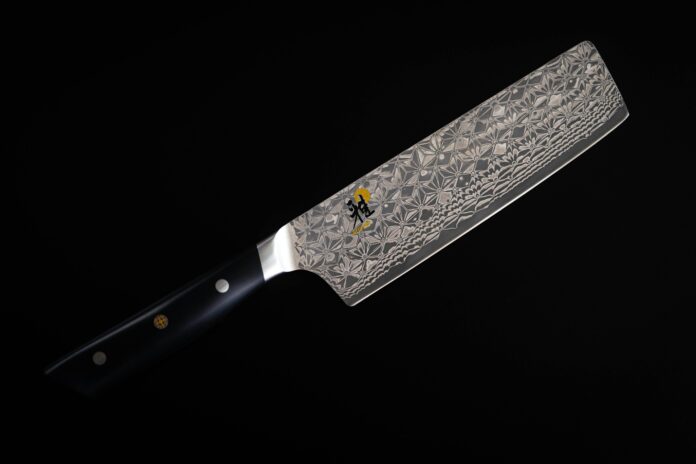Perfumes are personal – they tell stories, invoke emotions, and create unforgettable impressions. Finding the perfect fragrance that matches your personality and style can be a gratifying and revealing journey. However, the path to discovering your signature scent can be rather daunting when confronted with the complexities of perfume terminology.
Today, let’s spray a little around the place, in the hope of demystifying the world of perfumery, breaking down the jargon, enabling you to make educated choices when selecting your next fragrance.
Notes
When you delve into the world of perfumes, the term ‘notes’ will inevitably be one of the first you encounter. No, we’re not discussing music, but the intricate blend of scents that make up a perfume. They are often described as top/head notes, heart/middle notes, and base notes.
• Top/Head Notes: These are the first scents you experience when you spray a perfume. They are often fresh and light and are typically the most volatile, evaporating quickly, often within 15 minutes.
• Heart/Middle Notes: After the top notes have evaporated, the heart notes take centre stage. They provide the main body of the scent and are usually well-rounded and fuller than the head notes. Heart notes last longer, usually for a few hours.
• Base Notes: The base notes are the foundation of the perfume, providing depth and solidity. They interact with the heart notes to create the full body of the fragrance, lingering long after the perfume is sprayed – for several hours or even an entire day.
If you’re looking to sample the full spectrum of fragrances, try Parfumery or somewhere similar, where you can get samples sent to you without having to splash out on a whole bottle.

Sillage
Sillage (pronounced as see-yazh) is a French term used to describe a scent trail left by the fragrance wearer. It’s the aura or the attractive, scent-filled wake that lingers in the air when you walk past. If a perfume has powerful sillage, it has a significant presence, often noticed by others in the room.
Longevity & Concentration
Perfume longevity refers to how long a fragrance lasts once it is applied. Fragrances with high longevity can last 6-8 hours or more, though this depends not only on the perfume but also your behaviour when wearing it (don’t rub your wrists together, by the way!).
On the other hand (or, rather, in tandem with) perfume concentration refers to the proportion of aromatic compounds in a fragrance. There are five main concentrations:
• Parfum or Perfume: This has the highest fragrance concentration, typically ranging between 20% to 40%. They usually have high longevity and silage.
• Eau De Parfum (EDP): This has the next highest concentration, ranging from 15% to 20%. An EDP typically lasts for about 4 to 5 hours.
• Eau De Toilette (EDT): This has a fragrance concentration of between 5% to 15%. It is lighter and great for day wear.
• Eau De Cologne (EDC): This has a lower concentration of fragrance, between 2% to 4%, and lasts up to 2 hours.
• Body Spray/Mist: These have the lowest concentration, with only 1% to 3% of perfume oil, and usually last for up to 2 hours.
Understanding how these different elements contribute to a fragrance can indeed empower us in our quest for the perfect signature scent. When selecting a perfume, consider the type of scent you enjoy, the longevity desired, and the sillage you prefer.
Remember, it’s not just about the fragrance itself, but how it interacts with your own unique body chemistry to create a scent that’s distinctly you. But how do you choose a perfume that is the perfect reflection of you?

Identify Your Preferred Scent Family
Perfumes fall into one of several scent families – floral, fresh, oriental, and woody. Each category has a distinct character:
- Floral: As the name suggests, these fragrances are dominated by notes from various flowers such as rose, jasmine, or lily of the valley. They are often sweet and romantic. The iconic Dior J’adore represents a classic white floral blend, whilst Jo Malone’s Peony & Blush Suede offers a more contemporary, soft floral approach. For those seeking something more dramatic, Tom Ford’s Lost Cherry combines florals with rich almond and cherry notes, whilst Frederic Malle’s Portrait of a Lady showcases how a rose fragrance can be transformed into something darkly sophisticated.
- Fresh: These fragrances are refreshing and zesty, composed of citrus notes (like lemon, grapefruit), fruit notes (like apple, berry), or green notes (like fresh-cut grass). Penhaligon’s Quercus offers a quintessentially British take on a fresh, citrus scent, whilst Creed’s Silver Mountain Water presents an innovative fresh aquatic profile. For a more affordable yet equally refreshing option, Clean Reserve’s Rain combines watery notes with subtle florals. Acqua di Parma’s Fico di Amalfi captures the essence of Mediterranean summer with its blend of citrus and fig notes.
- Oriental: An outdated term no doubt, but an official category of perfume nonetheless, these are rich, warm fragrances with dominant notes such as vanilla, musk, cinnamon, and other spices. Afnan 9pm falls squarely into this category with its sweet, spicy profile, as does the iconic YSL Opium. Lattafa Raghba, with its rich amber and oud composition, exemplifies the deeper end of this family, while Xerjoff Erba Pura demonstrates how a modern interpretation can incorporate bright fruity notes alongside the traditional warm base. For those seeking a more affordable option in this category, Al Haramain Amber Oud Gold Edition offers a similar luxurious profile.
- Woody: These fragrances are characterised by warm, dry, and intimate aromas such as sandalwood, cedarwood, or patchouli. Le Labo’s Santal 33 has become a modern classic in this category, whilst Maison Francis Kurkdjian’s Grand Soir offers a sophisticated blend of benzoin and warm woods. For a more intense woody experience, Initio’s Oud for Greatness combines oud wood with spices and nutmeg, creating a powerful statement scent. More subtle but equally compelling is Byredo’s Mojave Ghost, which pairs woody notes with gentle florals for a softer interpretation.
Don’t Rush The Sniff Test
As the guys at PERFAME so sagely advise, when testing a new perfume it’s important to remember that perfumes are layered. Upon first spritz, you’ll smell the top notes, but these quickly evaporate to make way for middle and base notes. For this reason, it’s essential to take your time. Allow the perfume to settle on your skin for a few hours to let the full range of notes come through.

Consider The Occasion & Climate
The occasion and climate you’ll be wearing your perfume in can also guide your choice. For example, lighter, fresh fragrances are often suited to daytime wear or warmer climates, while heavier, oriental or woody scents can be great for autumn or winter months, capturing the scents of the season succinctly, or glamorous evening events too.
Take Your Body Chemistry Into Account
Body chemistry plays a pivotal role in how a perfume smells once applied. Factors like diet, skin type, and pH can alter the scent. What smells wonderful on a paper tester or your friend might not have the same allure when applied to your skin. Trying before buying is always the way forward.
The Bottom Line
Choosing the right perfume can be a beautiful journey of olfactory discovery. Perfumes tap into our emotions, memories, and personal style in a way that few other accessories can. By understanding your preferred scent profiles, considering the setting in which you’ll be wearing your fragrance, and testing on your skin, you’ll be well on your way to finding the scent that truly compliments you.





